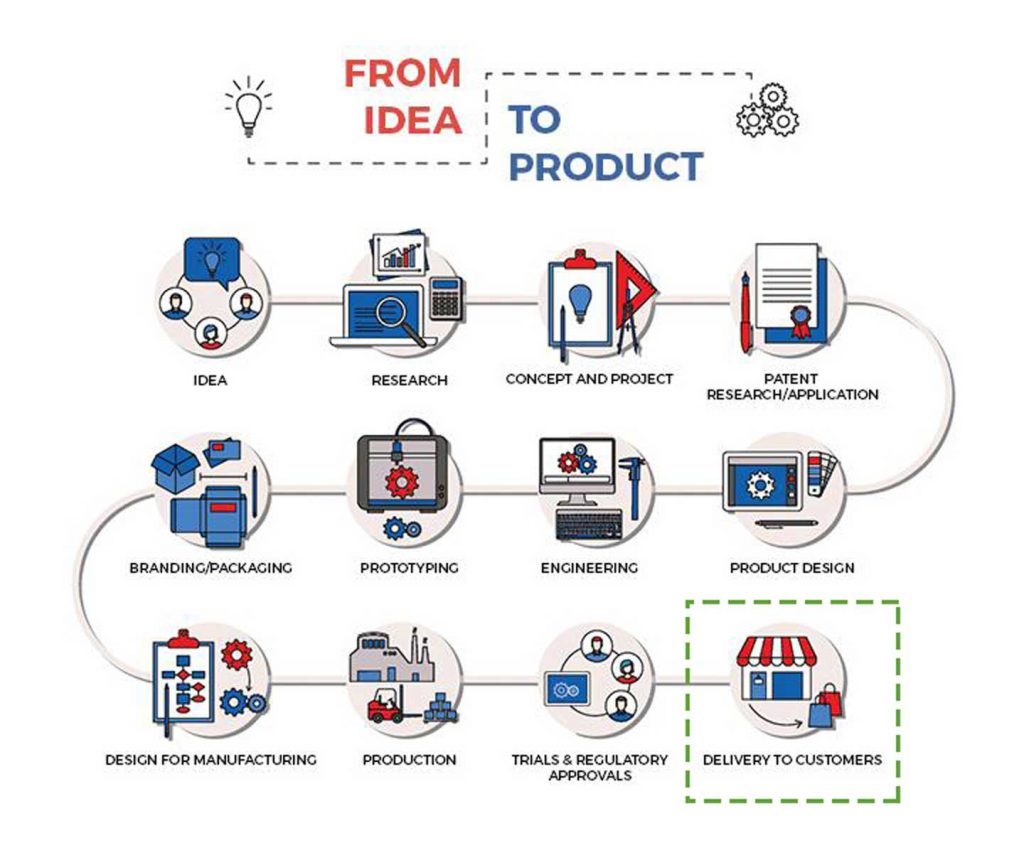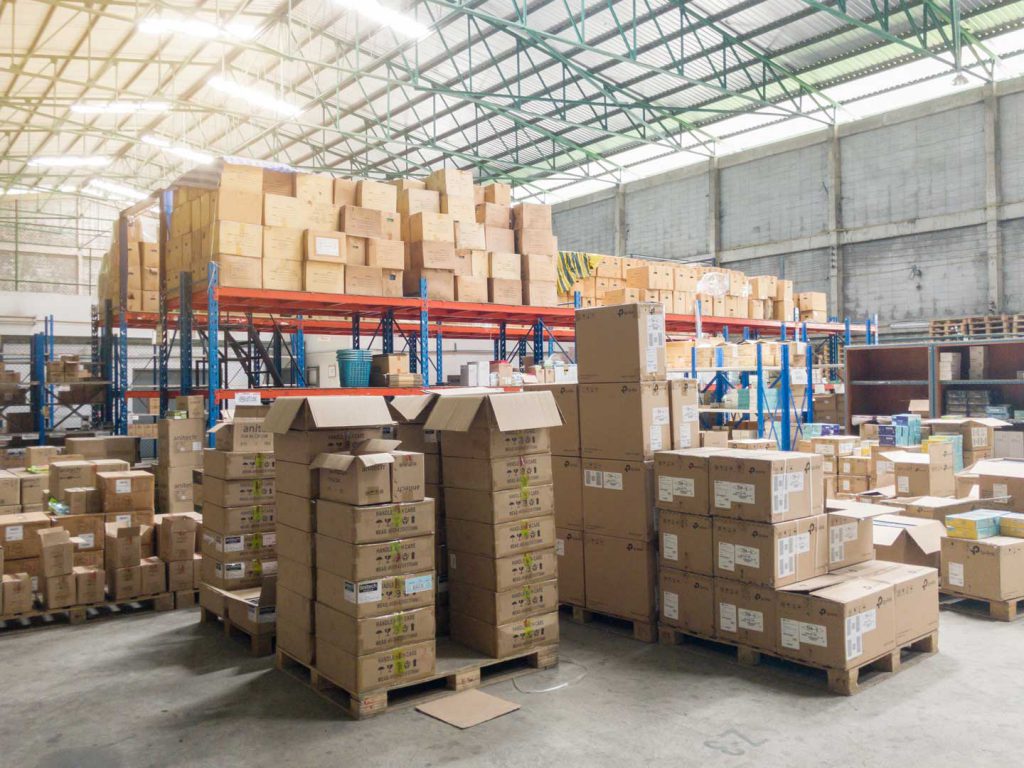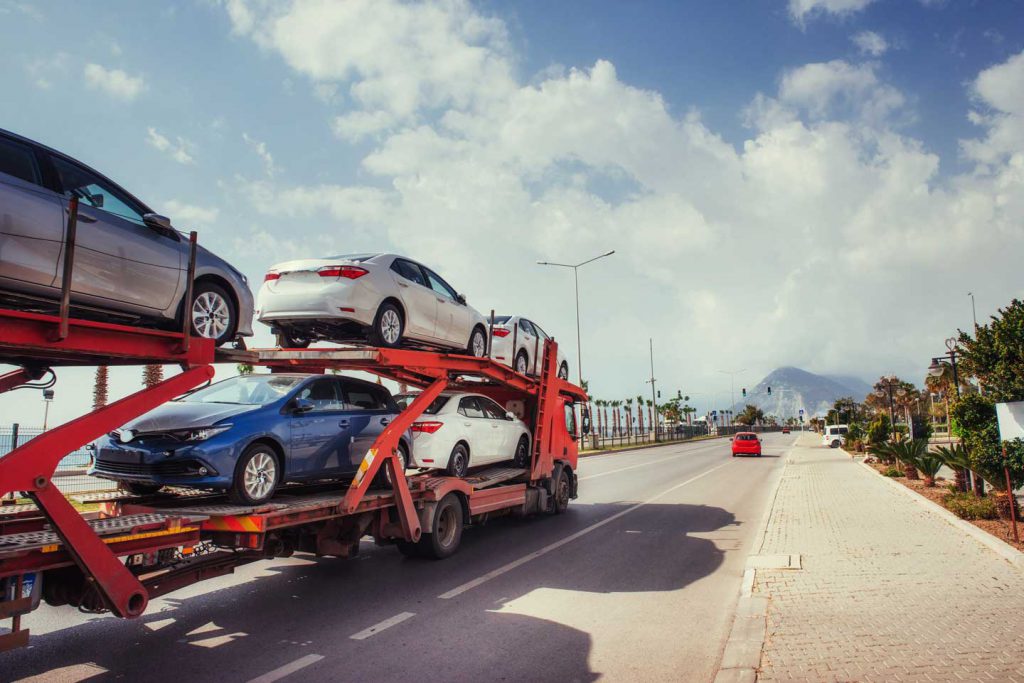Bring your product to the people
In this blog series, we deep dive into each stage of the idea to product lifecycle, from identifying a problem and formulating an idea through production and marketing. In each post, we’ll focus on one of the twelve unique aspects of the cycle and its impact on the end product.
Stage 12 of 12: Delivery to Customers

In the last stage of the idea to product lifecycle, you’ll consider how to best deliver your product to customers
As an engineer, you may think your job is complete once the product is manufactured and assembled, however, perhaps the most important part of the idea to product lifecycle is the delivery of the product to customers.
Can you satisfy the demand of the on-demand economy?
Amazon has ruined the product delivery system for everyone by offering free next day and even same day shipping. With other on-demand services, like Uber, Postmates, etc., customers expect everything to be delivered to them within a couple of hours (and sometimes even just a couple of minutes). Until teleportation is perfected, most companies will not be able to meet these delivery time demands for their products, but they should at least try to offer the best product delivery possible, not just in terms of speed.
Can you ship it?
Questions to consider:
- Can the product fit in a standard sized box or does it require custom packaging?
- Does the truck that’s delivering it need to be heat regulated for any reason?
- Are you shipping in bulk or are products manufactured and shipped on-demand? Is the product shipped fully assembled or are different parts shipped separately and then require assembly?
- Are all parts manufactured at the same location or will you require distribution centers?

In the branding and packaging stage, you should have developed a brand and designed your product packaging. This packaging is what will attract customers shopping in stores to purchase your product over another. If you do not plan to sell your product in stores, you will also have to consider more practical packaging for shipping purposes. Depending on various characteristics of your product, i.e., size, shape, lifespan, you may need to customize your shipping methods. If you product is oversize, the shipping rates may be very expensive. If your product is easily damaged, you may need to ensure each shipment. If your product is perishable or contains perishables, you may need to consider temperature controlled transportation and storage. In terms of the actual transportation of the product, there are few options. Depending on the quantity of product you plan to produce and sell, you have the option of using a courier service like FedEx or UPS. If your product is to be sold within a physical retailer, like Target, or a digital one, like Amazon, the retailers may have their own respective shipping and delivery policies. Additionally, if you’re using a distribution center for assembly and order fulfillment, the specific shipment methods may be up to the policies of the distributor.
Green is good

Another consideration regarding shipping and packaging methods is the environment. Many companies are taking the initiative to change their delivery methods to be more environmentally friendly. Over the past two decades, Honda has changed their system for transporting cars from manufacturers to dealers. In pursuit of more efficient and eco-friendly transportation of their products, Honda has implemented a combined process, which uses multiple forms of transportation, including trucks, ships, and railways. They have also made an effort to make their packaging more eco-friendly by using multiple-use containers to reduce waste. Green initiatives may be more costly at the beginning because of the large upfront investment, but you’ll be able to reduce costs in the future by reusing materials and reducing waste. With more companies moving towards greener business practices, environmentally friendly packaging and delivery methods will become the norm.
Quality guaranteed
In terms of customer service, your goal should be to gain customer loyalty by providing a quality product. To ensure the quality of the product once it’s transferred hands, you may consider adding a quality guarantee, like a warranty. A warranty will give customers piece of mind when they’re deciding to purchase the product because they can be assured of its continual quality. Companies like Patagonia and Zippo have lifetime warranties that cover both manufacturer defects and normal wear and tear. Their commitment to upholding the quality of their products is what creates trust and loyalty among their customers.
What’s next?
That’s all, folks!
Congratulations! You made it all the way through the series, all twelve steps of the cycle. At this point, hopefully you’ve gained an understanding of the process of designing a product and bringing it to market. The life cycle is all around you; every product began as an idea of a way to solve some problem. The abundance of “things” in the world represents the dedication of society to solving their problems and the problems of others.
























